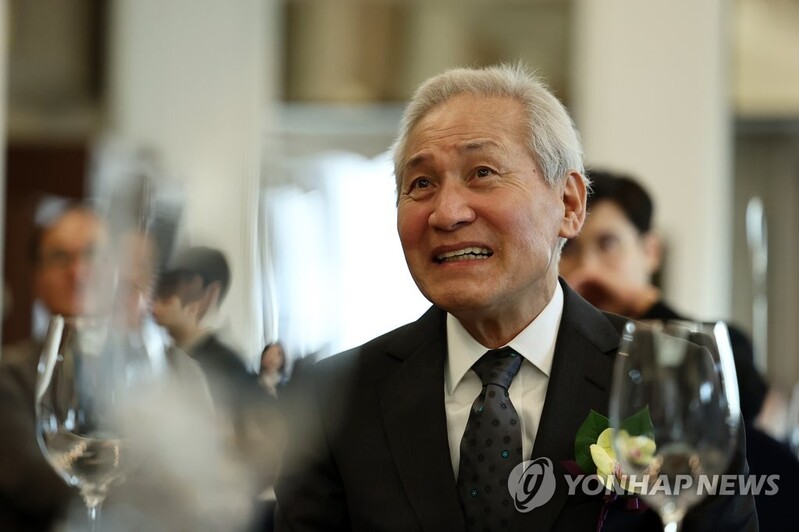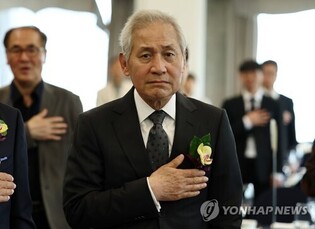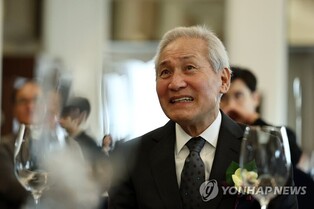*Editor’s note: K-VIBE invites experts from various K-culture sectors to share their extraordinary discovery about the Korean culture.
Choi Man-soon's Medicinal K-Food: Ramen, A Bowl of Comfort
By Choi Man-soon, Food Columnist and Director of the Korea Traditional Medicine Food Research Institute
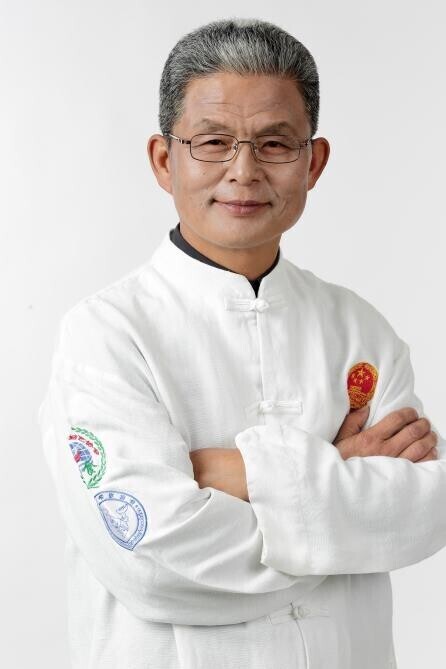
For Koreans, ramen is both an emergency ration and a taste of home. It serves as a companion for survival in crises such as natural disasters or wars, offering a warm sense of hope. At the same time, it rekindles memories of home, embodying nostalgia for distant places.
More than a simple hunger-satisfying food, ramen is a "bowl of solace" that restores the familiar and comforting.
The author recalls their father bringing ramen home for the first time, priced at just 10 won per pack, with a stick of gum included as a bonus. Initially, the unfamiliar oily taste of ramen did not appeal to them. However, their mother improvised by mixing soybean paste and red chili paste into a broth and cooking ramen together with traditional noodles, transforming the dish into a delightful meal with the curly noodles adding a unique charm.
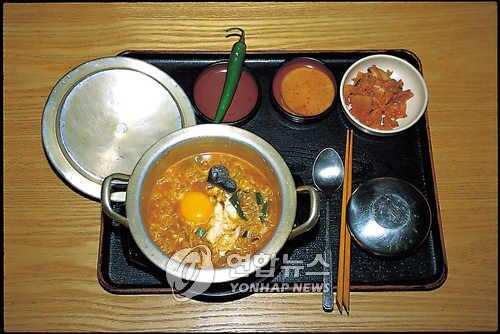 |
| ▲ This undated file photo shows South Korean ramen. (Yonhap) |
Looking back, the author's mother’s ingenuity was remarkable. Early ramen products by Samyang Foods, modeled on Japan’s Myojo (明星) Chicken Ramen, were not initially popular with Korean consumers due to their rich chicken-based soup, which felt overly greasy.
Samyang Foods, however, was determined to adapt ramen to Korean tastes. They even showcased their product to President Park Chung-hee at the Blue House. President Park reportedly suggested that Korean people prefer spicier and saltier flavors, recommending the addition of chili powder.
Samyang Foods incorporated these changes, adding a mildly spicy flavor to their ramen. This adjustment, coupled with the government's promotion of mixed-grain consumption, propelled ramen’s success. In Korea, "ramen" generally refers to instant ramen, with bagged ramen being the most common form. Cup ramen, which comes in a disposable container and can be cooked by adding hot water, is known as "cup ramen."
The author, who served as a technical advisor for a ramen company from 2008 to 2013, highlights the global rise of Korean ramen. According to the Ministry of Agriculture, Food, and Rural Affairs, Korea’s ramen exports reached $1.138 billion (approximately 1.596 trillion KRW) this year, a 30% increase from the same period last year. This marks a historic high, excluding figures from overseas production facilities not accounted for in export data.
◇ Ramen’s Many Names
Ramen is an instant food made by steaming noodles, frying them in oil, and pairing them with powdered soup packets. Its signature characteristics include curly noodles and a yellow hue from added vitamin B2.
The term "ramen" originates from the Chinese word "lamian" (拉麵), but was reintroduced to Korea via Japan. Around the world, ramen is known by various names. In China, it is called "fangbianmian" (方便面) or "paomian" (泡麵). In Taiwan, it is "sushimian" (速食麵), while in Hong Kong, it is "jisikmian" (卽食麵). Malaysia and Singapore call it "kaisukmian" (快熟面). However, in China, "lamian" (拉麵) refers specifically to hand-pulled noodles.
In the U.S. and Europe, ramen is commonly referred to as "instant noodle" or simply "noodle." Since macaroni and spaghetti are categorized as "pasta," there is little confusion when referring to ramen as "noodle." To distinguish soup-based ramen, terms like "noodle soup" are used. In East Asia, the general term "ramen" suffices.
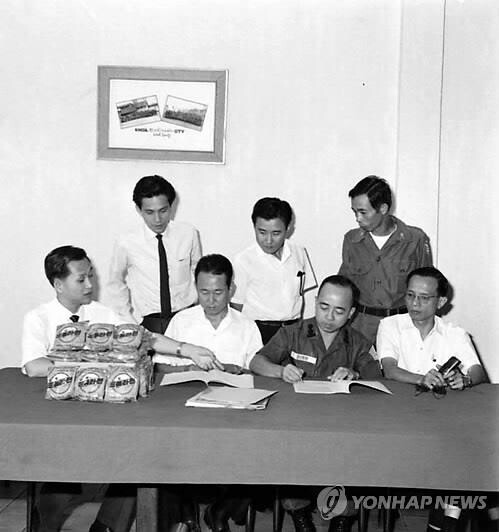 |
| ▲ A commemorative photo from the "1968 Samyang Ramen 3.6 Million Packs Vietnam Export Contract Signing Ceremony," publicly released by the National Archives of Korea on December 9, 2014. (PHOTO NOT FOR SALE) (Yonhap) |
◇ The Strategy of Cooking Ramen
Drawing inspiration from the Art of War by Sun Tzu, particularly the chapter on "Strategic Offense" (謨攻), the act of cooking ramen can be viewed as an exercise in strategic thinking: achieving maximum effect with minimal resources.
Sun Tzu argues that the ultimate victory lies in overcoming the enemy without fighting. In ramen-making, this principle translates to creating the best flavor with simplicity and efficiency, avoiding unnecessary steps or complexity. A flawless ramen cooking process minimizes wasteful actions such as adjusting water levels or re-boiling noodles. Following the recipe meticulously ensures efficient cooking, akin to winning without engaging in a drawn-out battle.
Sun Tzu emphasizes that direct assaults, such as attacking a fortified city, should be a last resort. Simpler and more effective strategies should take precedence. Similarly, in cooking ramen, simplicity leads to success.
▲ Steps for Efficient Ramen Cooking:
Prepare the Right Amount of Water. Too much or too little water leads to inefficiencies, such as diluting or thickening the broth later.
Add ingredients in proper order. Wait for the water to boil before adding the noodles and seasoning. Prematurely adding them can cause imbalances in taste.
Prepare additional ingredients in advance. If adding extras like eggs or green onions, prepare them beforehand to avoid disrupting the cooking process. Just as in warfare, maintaining a smooth flow from preparation to execution is vital.
When enhancing ramen with additional ingredients, it’s essential to respect the core flavors. This mirrors Sun Tzu’s philosophy of reserving a direct assault on a fortified position as a last measure. Overwhelming the dish with extra flavors risks overshadowing its essence.
◇ From Luxury Dish to Staple of the Masses
Ramen, initially a prized delicacy upon its release, has evolved over time into an essential staple for the masses. When first introduced, ramen carried an air of exclusivity, often seen as a special treat. However, with rapid economic development and a significant increase in production during the 1970s and 1980s, ramen became widely affordable. Within just two decades, it transitioned from being a luxury meal to a representative food for ordinary people.
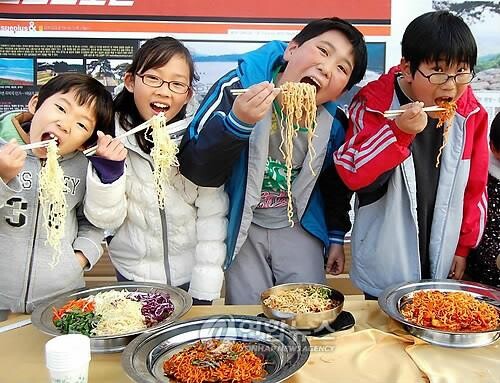 |
| ▲ Children visiting the central plaza of Dahanu Village, a Hanwoo-themed village in Gimpo, enjoy tasting a giant bowl of hanwoo ramen on April 17, 2010. (Yonhap) |
Due to its accessibility, ramen holds substantial weight in cost-of-living indices. Apart from its characteristic spiciness, Korean ramen is globally lauded for its balanced seasoning and superior noodle quality. The government strongly regulates its pricing and quality, viewing it as a last defense against food insecurity for the general population. Intense market competition has driven Korean ramen companies to optimize cost-effectiveness, with over 60% of the production cost going directly into high-quality ingredients.
Moreover, the hygienic standards in Korean ramen manufacturing ensure unparalleled safety and quality. The standard serving size of 120 grams per packet in Korea, roughly a full meal, contrasts with the 65-gram packets common in many other countries.
Korean ramen's influence has extended globally, inspiring creative adaptations. For example, in Malaysia, a street vendor introduced a dish known as the Buldak Omelet, combining spicy Korean ramen with local flavors. This dish, made by wrapping stir-fried Buldak Bokkeum Myun in a thin egg crepe with onions and minced meat, has gained massive popularity. Videos showcasing the preparation have surpassed 40 million views.
Unlike more complex fusion dishes, the simplicity of the Buldak Omelet allows anyone to replicate it at home, boosting its appeal.
In countries with high ramen consumption, such as Korea, Japan, and China, instant ramen is a key emergency provision. During pandemics, natural disasters, or times of crisis, ramen is often stockpiled in bulk. Its versatility as emergency food lies in its ability to provide warmth, comfort, and high caloric content in challenging circumstances. The combination of its spicy broth and hearty noodles offers not only physical sustenance but also psychological solace.
Korean ramen exemplifies the heights of food engineering, embodying a balance of affordability, taste, and nutrition. It stands as a vital, high-quality product that meets the needs of consumers across diverse situations, from everyday meals to survival scenarios.
(C) Yonhap News Agency. All Rights Reserved

























![[가요소식] 베이비몬스터, 첫 북미 투어 다큐 공개](/news/data/20260102/yna1065624915971209_797_h2.jpg)





